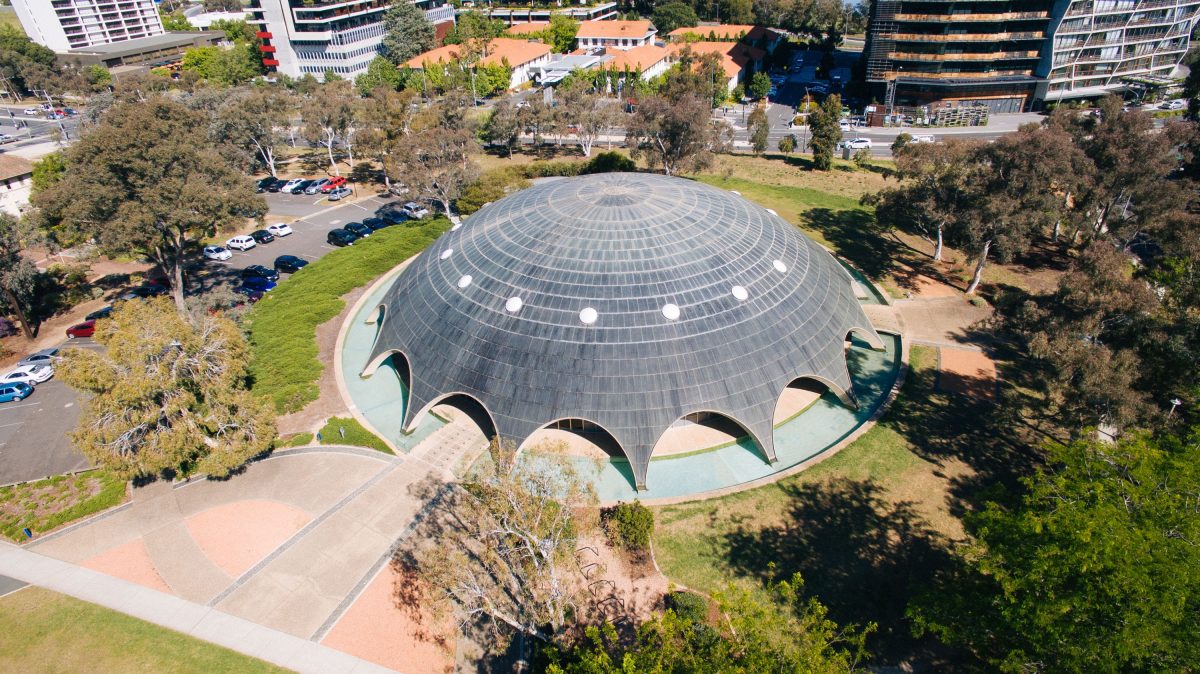
The Shine Dome’s roof is made up of 1888 handmade copper tiles. Photo: The Shine Dome.
The Plum Pudding, the Mushroom, the Igloo, the Turtle, the Eskimo Embassy, the Flying Saucer – Canberra’s Shine Dome has earned many nicknames over the years, but king of them all, Emeritus Professor Hans Bachor reckons, is the Martian Embassy.
“The Martian Embassy is probably the most common – which links to the cartoons and ideas of the 1960s,” the research fellow from the Australian Academy of Science (AAS) says.
Whatever you call it, the intriguing landmark celebrates its 65th birthday this year. And that’s no mean feat for something the engineers were concerned would only last six seconds.
Professor Bachor was elected to the AAS as one of its research fellows in 2014 and has a “deep interest” in the dome, its archive and library, as well as the obvious – “its architectural significance and the heritage value of the building”.
He guided public tours over the weekend in a special Open Day event for the Canberra and Region Heritage Festival.
“Most have seen this unusual, futuristic building only from the outside, many as part of school excursions years ago,” he says.
“We went deep inside, not only the lecture theatre but the many parts that are being used to create new science ideas.”
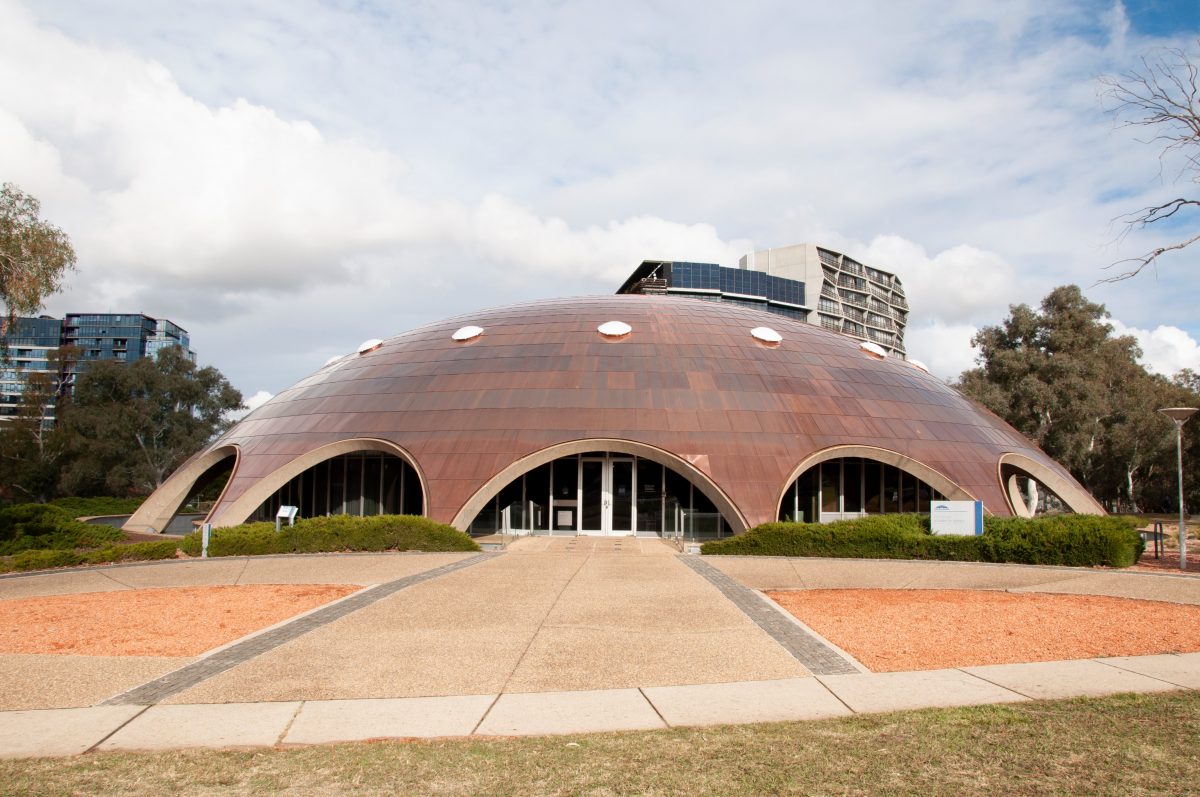
The roof was replaced in 2020 after a hailstorm damaged the original tiles. Photo: Australian Academy of Science, Twitter.
The building is one of Canberra’s earliest landmarks, from a time even before Lake Burley Griffin.
In the early 1950s, the Australian Academy of Science was finding its offices at the Australian National University (ANU) poky, and its 64 fellows set about raising funds for a new dedicated home.
They wanted one unlike any other, and a radical design by architect Sir Roy Grounds was chosen. So radical, no one was sure the 710 tonnes of concrete dome perched on 16 slender supports wouldn’t just collapse the moment the building supports were removed.
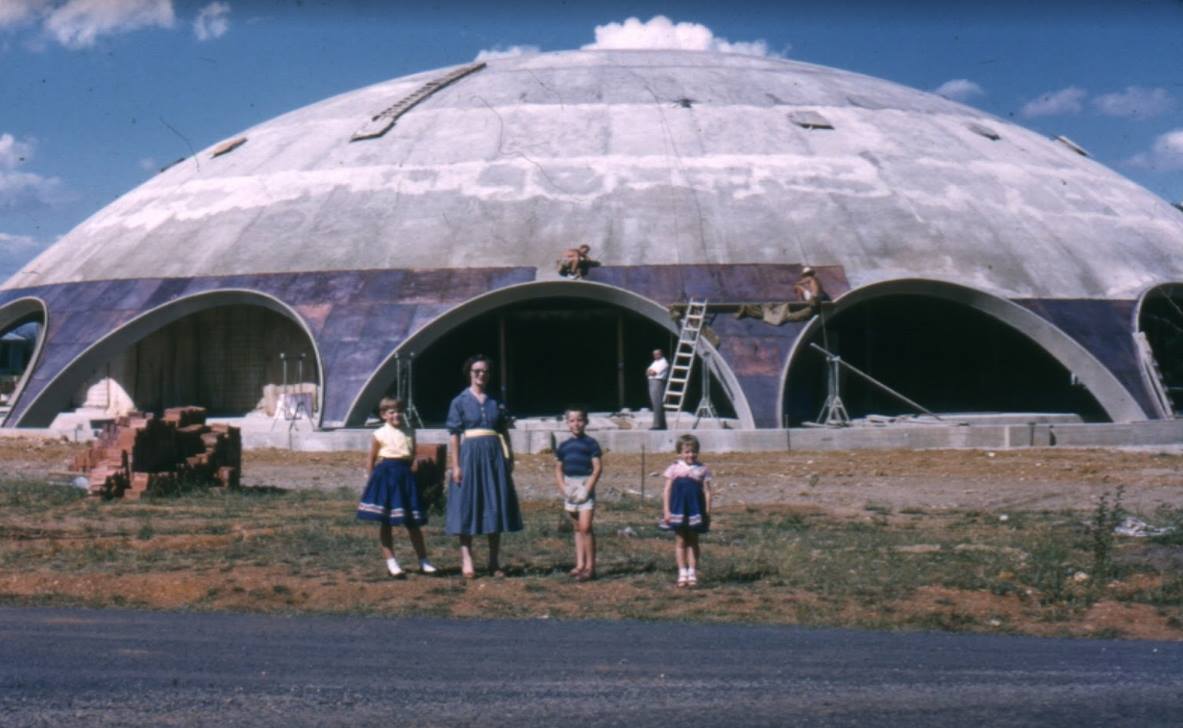
Construction on the Shine Dome. Photo: Jenni Lee.
A one-fortieth scale model was built to see if it would work, and the maths math-ed. When the forest of wooden formwork was tenderly removed in 1959, the dome dropped less than a centimetre as it took its own weight.
But making sure the roof stayed on was only half the battle. Inside, it took a great deal of experimentation with acoustic baffles to control the strange echoes created by the dome shape.
The engineers ended up suspending a variety of baffles from the ceiling and others built into long wooden panels on the walls which, in turn, created another problem.
The wall-mounted baffles were causing some form of optical interference, rendering about half the people in the room nauseous.
It took a doctor from the John Curtin School of Medicine at the ANU a long time to come up with the idea of filling in the visually offending gaps with strings. This fixed the optical problem without spoiling the acoustics.
The total cost was £260,000. On 6 May 1959, a crowd of luminaries of science and politics gathered to witness Governor-General Sir William Slim officially open ‘Becker House’.
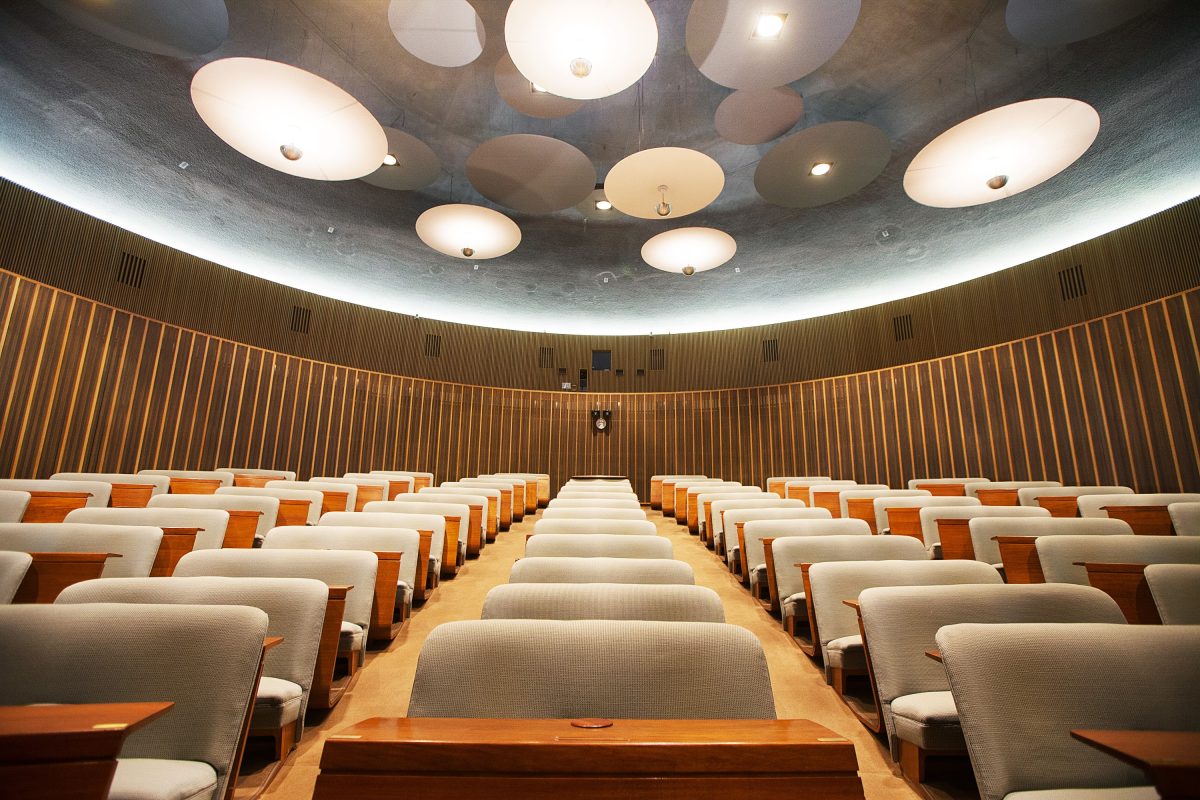
Inside the Shine Dome. Photo: The Shine Dome.
For most of the building’s existence, it’s been named in honour of a certain Sir Jack Ellerton Becker and his sizable donation to the cause.
It wasn’t until 2000, when the dome was completely restored and upgraded with a new cooling system largely due to a $1 million donation from Academy professor John Shine did it become the Shine Dome we know today.
It was added to the National Heritage List in 2005 because of its unique architecture and status as a landmark.
Professor Bachor says most people react to seeing it up close with “calm wonder”.
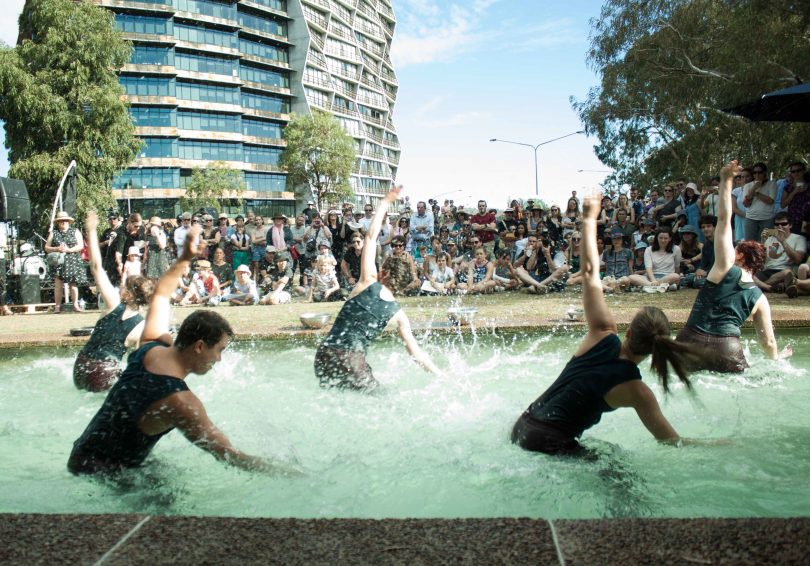
An Australian Dance Party was held in the moat surrounding the Shine Dome in 2018. Photo: Maria Koulouris.
“This was at the limit of what could be built, and all technology is elegantly hidden. I am proud that it can live, with a new copper roof, for decades to come, preserving not only the ideas of science but also the materials.”
The dome – still going strong – largely serves as an auditorium, but there are also several function spaces available for hire. Professor Bachor says it’s hosted numerous weddings, conferences, meetings and even a swing dancing festival over the years.
“The Shine Dome is a place not only for scientists to come together but also our community.”
Original Article published by James Coleman on Riotact.

